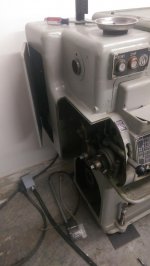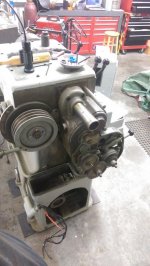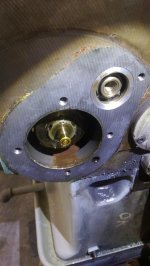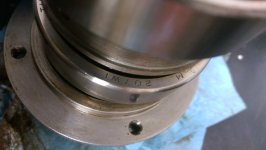Zengineer
Plastic
- Joined
- Mar 8, 2011
- Location
- British Columbia, Canada
Happily working away on my 1952 Pratt & Whitney 12x30 Model C, and noticed the machine was getting louder. Played around a bit and came to the conclusion that it's relative to the drive motor RPM. Checked belts (they are old, but not visibly cracked), and took a good look at the motor output shaft runout, and belts on there while turning. Looked good. Turned speed down on the VFD and the sound is certainly coming from the headstock, high up, rather than from the motor.
Pretty discouraging. I don't get a lot of garage time these days (hobbyist) and it took the wind out of my sails a bit. The next steps are somewhat obvious, remove the headstock cover, run the machine at low motor speeds and see what I can do to isolate the noise.
Why am I posting? Just want to share my pain and am hopeful that a seasoned pro might tell me "normally it's XX"... wishful thinking I know! One idea that pops to mind is that the belts are hard and due to the machine sitting (as it has off and on for long periods of time) they aren't pliable. Can't see it looking good at the motor end in that scenario though.
Any words of encouragement are welcome.
Pretty discouraging. I don't get a lot of garage time these days (hobbyist) and it took the wind out of my sails a bit. The next steps are somewhat obvious, remove the headstock cover, run the machine at low motor speeds and see what I can do to isolate the noise.
Why am I posting? Just want to share my pain and am hopeful that a seasoned pro might tell me "normally it's XX"... wishful thinking I know! One idea that pops to mind is that the belts are hard and due to the machine sitting (as it has off and on for long periods of time) they aren't pliable. Can't see it looking good at the motor end in that scenario though.
Any words of encouragement are welcome.









